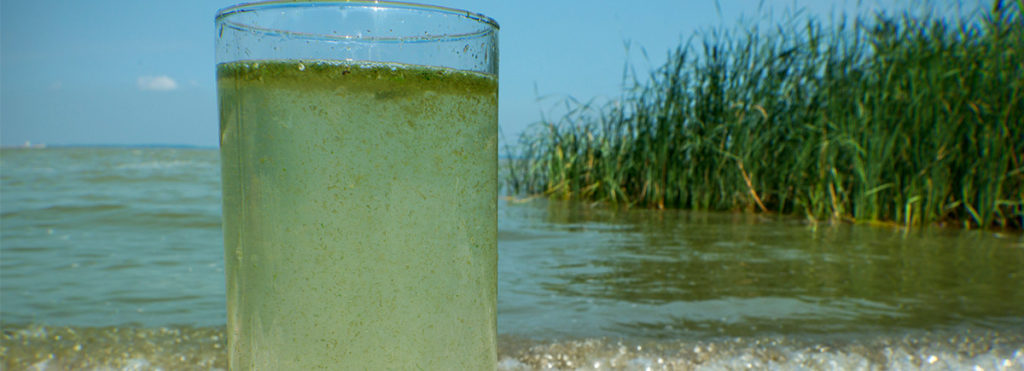
Today, the National Oceanic and Atmospheric Administration released its annual harmful algal bloom forecast for Lake Erie. Every year, agricultural runoff pollution causes harmful algal blooms. This thick, green algae covers large parts of the western Lake Erie basin.
This afternoon, the Alliance for the Great Lakes held a webinar to break down the harmful algal bloom forecast and hear from people directly impacted. We were joined by partners at Junction Coalition, Freshwater Future, Ohio Environmental Council, and Michigan League of Conservation Voters. Together, we provided an overview of what’s being done — or not being done — to clean up Lake Erie and recommended clear next steps for elected leaders.
Communities Suffer When Leaders Fail to Act
Algal blooms can be hugely impactful. Last year’s bloom was the third largest on record, with thick, green slime covering more than 700 square miles in the western basin.
On today’s webinar, Megan Powell, Environmental Specialist at Junction Coalition in Toledo, shared her perspective. Powell described the stunning reality that every summer, people in her community worry about whether they will be able to drink their water.
“The traumatic experience of not having access to clean water is long-lasting,” Powell said, recalling the time in 2014, when half a million people in Toledo lost access to tap water because a small but toxic algal bloom contaminated their water intake.
Powell shared that she saw people stocking up on pallets full of bottled water at the grocery store, preparing for a summer algal bloom. This indicates a constant state of fear, she said, of losing access to clean water again.
“A friend of mine runs a nonprofit urban garden in Toledo, where he grows food for the community,” Powell said. “I mentioned the Lake Erie Forecast to him and his first thought was that he wouldn’t be able to afford to buy bottled water for his crops if we had another water crisis.”
Policy Update: What are the jurisdictions doing to clean up Lake Erie?
Three years ago, the Governors of Ohio and Michigan joined with the Premier of Ontario to commit to reducing the amount of runoff pollution, specifically phosphorus, flowing into western Lake Erie by 40 percent. They’ve created action plans that address all sources of pollution — including chemical fertilizer, manure, wastewater and more. Unfortunately, the states’ plans lack accountability mechanisms, have few clear deadlines, and rely heavily on voluntary programs.
Each jurisdiction is at a different point in the process, here’s an update on where they stand:
- Michigan has listed its portion of Lake Erie as an impaired waterway, which opens up new tools and funding streams to address the problem, but the state’s action plan lacks teeth and fails to address failing septic systems.
- Ohio also designated Western Lake Erie as impaired, and yesterday, Gov. Kasich issued an executive order that sets up a process for stronger pollution rules, and signed the Clean Lake Erie 2020 bill into law — the state still has a lot of work to do policy-wise, but these recent developments suggest strong forward momentum.
- The Ontario plan includes good ideas, but lacks clear timelines and has major policy gaps.
Pushing Solutions Forward for a Clean Lake Erie
The good news is that there are clear policy steps that governors and the premier can take to reduce harmful algal blooms right now.
At the height of last year’s massive algal bloom — which spanned more than 700 square miles of Western Lake Erie — we released an original report, Rescuing Lake Erie: An Assessment of Progress. In the report, we analyzed the root of the algal bloom problem and examined potential policy solutions. We also included three topline policy recommendations that should be implemented immediately.
